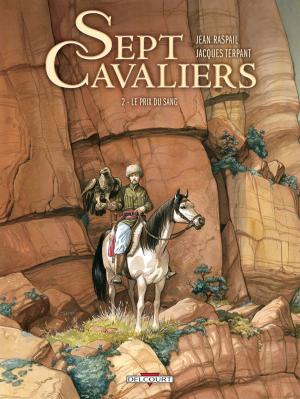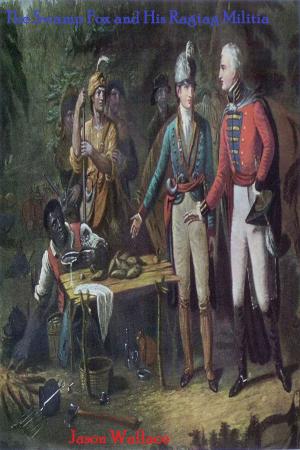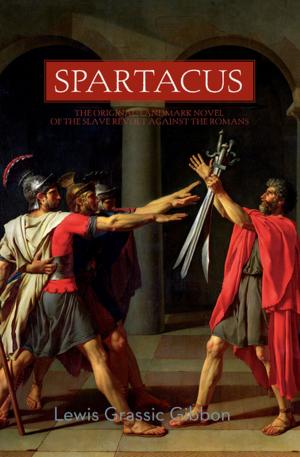Sixty Squadron R.A.F.
A History of the Squadron from its Formation (Illustrations)
Nonfiction, History, Military, Other, Biography & Memoir, Historical| Author: | Group-Captain A. J. L. Scott | ISBN: | 1230000290470 |
| Publisher: | GEORGE H. DORAN COMPANY | Publication: | January 8, 2015 |
| Imprint: | Language: | English |
| Author: | Group-Captain A. J. L. Scott |
| ISBN: | 1230000290470 |
| Publisher: | GEORGE H. DORAN COMPANY |
| Publication: | January 8, 2015 |
| Imprint: | |
| Language: | English |
Example in this ebook
This book tells the story of Squadron No. 60 of the Royal Flying Corps, afterwards of the Royal Air Force.
When the war began, in August 1914, the Royal Flying Corps was a very small body which sent four squadrons on active service and had a rudimentary training organisation at home. In those days the only functions contemplated for an airman were reconnaissance and occasionally bombing. Fighting in the air was almost unknown. The aeroplanes were just flying machines of different types, but intended to perform substantially the same functions. Gradually as the war continued specialisation developed. Fighting in the air began, machine guns being mounted for the purpose in the aeroplanes. Then some aeroplanes were designed particularly for reconnaissance, some particularly for fighting, some for bombing, and so on. It was in the early part of this period of specialisation that Squadron No. 60 was embodied. And, as this narrative tells us, its main work was fighting in the air. It was equipped for the most part with aeroplanes which were called scouts—not very felicitously, since a scout suggests rather reconnaissance than combat. These machines carried only one man, were fast, easy to manœuvre, and quick in responding to control. They were armed with one or two machine guns, and they engaged in a form of warfare new in the history of the world, and the most thrilling that can be imagined—for each man fought with his own hand, trusting wholly to his own skill, and that not on his own element, but in outrage of nature, high in the air, surrounded only by the winds and clouds.
The embodiment of the fighting scout squadrons was part of the expansion and organisation of what became the Royal Air Force. Among all the achievements of the war there has been, perhaps, nothing more wonderful than the development of the Royal Flying Corps and the Royal Naval Air Service, and their amalgamation in the great Royal Air Force which fought through the last year of the war. When the war opened, the Royal Flying Corps and the Royal Naval Air Service were bodies of few units, ancillary to the Army and the Navy, of which the control was in the hands of the Army Council and the Board of Admiralty. It was not realised that warfare in the air was a new and distinct type of warfare. Generals who would have laughed at the idea of commanding a fleet, Admirals who would have shrunk from the leadership of an army corps, were quite unconscious of their unfitness to deal with the problems of aerial war. Every step, therefore, of the organisation and expansion of the flying services had to be conducted under the final control of bodies, kindly and sympathetic indeed, but necessarily ignorant. That the Royal Flying Corps attained to its famous efficiency and was expanded more than a hundredfold should earn unforgetting praise for those who were responsible for leading and developing it. The country owes a great debt, which has not, perhaps, been sufficiently recognised, to Sir David Henderson, whose rare gifts of quick intelligence and ready resource must have been taxed to the utmost in his dual position as head of the Flying Corps and member of the Army Council; to Sir Sefton Brancker, who worked under him in the War Office; and to Sir Hugh Trenchard, who, from the date that Sir David Henderson came back from France to that of the amalgamation of the flying services in the Royal Air Force, was in command in France. It was the administrative skill of these distinguished men that stood behind the work of the squadrons and made possible their fighting or bombing or reconnaissance. And this background of administrative skill and resource must not be forgotten or suffered to be quite outshone by the brilliant gallantry of the pilots and observers.
To be continue in this ebook
Example in this ebook
This book tells the story of Squadron No. 60 of the Royal Flying Corps, afterwards of the Royal Air Force.
When the war began, in August 1914, the Royal Flying Corps was a very small body which sent four squadrons on active service and had a rudimentary training organisation at home. In those days the only functions contemplated for an airman were reconnaissance and occasionally bombing. Fighting in the air was almost unknown. The aeroplanes were just flying machines of different types, but intended to perform substantially the same functions. Gradually as the war continued specialisation developed. Fighting in the air began, machine guns being mounted for the purpose in the aeroplanes. Then some aeroplanes were designed particularly for reconnaissance, some particularly for fighting, some for bombing, and so on. It was in the early part of this period of specialisation that Squadron No. 60 was embodied. And, as this narrative tells us, its main work was fighting in the air. It was equipped for the most part with aeroplanes which were called scouts—not very felicitously, since a scout suggests rather reconnaissance than combat. These machines carried only one man, were fast, easy to manœuvre, and quick in responding to control. They were armed with one or two machine guns, and they engaged in a form of warfare new in the history of the world, and the most thrilling that can be imagined—for each man fought with his own hand, trusting wholly to his own skill, and that not on his own element, but in outrage of nature, high in the air, surrounded only by the winds and clouds.
The embodiment of the fighting scout squadrons was part of the expansion and organisation of what became the Royal Air Force. Among all the achievements of the war there has been, perhaps, nothing more wonderful than the development of the Royal Flying Corps and the Royal Naval Air Service, and their amalgamation in the great Royal Air Force which fought through the last year of the war. When the war opened, the Royal Flying Corps and the Royal Naval Air Service were bodies of few units, ancillary to the Army and the Navy, of which the control was in the hands of the Army Council and the Board of Admiralty. It was not realised that warfare in the air was a new and distinct type of warfare. Generals who would have laughed at the idea of commanding a fleet, Admirals who would have shrunk from the leadership of an army corps, were quite unconscious of their unfitness to deal with the problems of aerial war. Every step, therefore, of the organisation and expansion of the flying services had to be conducted under the final control of bodies, kindly and sympathetic indeed, but necessarily ignorant. That the Royal Flying Corps attained to its famous efficiency and was expanded more than a hundredfold should earn unforgetting praise for those who were responsible for leading and developing it. The country owes a great debt, which has not, perhaps, been sufficiently recognised, to Sir David Henderson, whose rare gifts of quick intelligence and ready resource must have been taxed to the utmost in his dual position as head of the Flying Corps and member of the Army Council; to Sir Sefton Brancker, who worked under him in the War Office; and to Sir Hugh Trenchard, who, from the date that Sir David Henderson came back from France to that of the amalgamation of the flying services in the Royal Air Force, was in command in France. It was the administrative skill of these distinguished men that stood behind the work of the squadrons and made possible their fighting or bombing or reconnaissance. And this background of administrative skill and resource must not be forgotten or suffered to be quite outshone by the brilliant gallantry of the pilots and observers.
To be continue in this ebook















